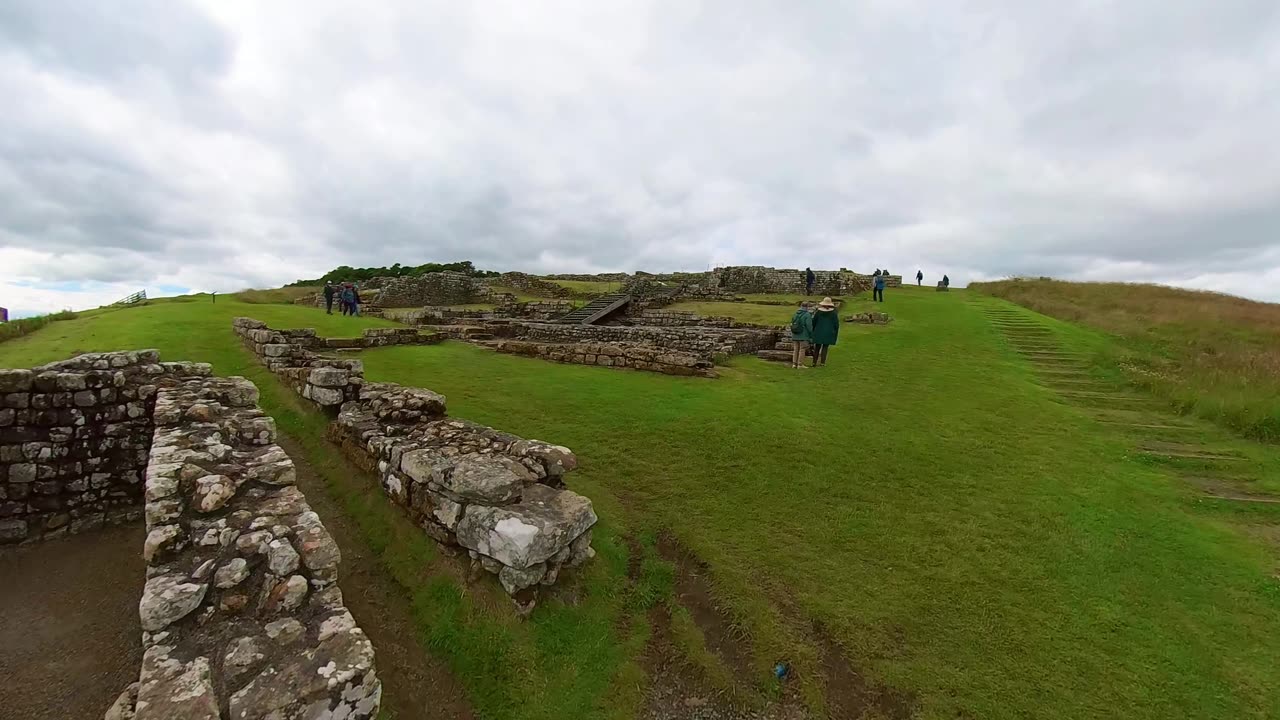Premium Only Content

Housesteads Roman Fort visit
For anyone curious about the orange back-packs, I think they were doing the Duke of Edinburgh Award.
(https://www.royal.uk/duke-edinburghs-award)
A plan of the fort can be viewed and downloaded here :-
A general map of the location can be viewed and downloaded here :-
Lying midway along Hadrian’s Wall, Housesteads is the most complete example of a Roman fort in Britain, and one of the best-known from the entire Roman Empire. It was built within a decade of AD 122, when work on the Wall began, and was garrisoned by an 800-strong infantry regiment until the end of the 4th century. Excavations have revealed major buildings, defences and the civilian settlement outside its walls.
There is little evidence for pre-Roman activity at Housesteads. The first Roman presence is evident in the broad foundation of Hadrian’s Wall along the north edge of the escarpment, and in a turret (no. 36b), one of a regular system of towers and small forts (known as milecastles) along the line of the Wall. The turret now lies within the fort walls.
The building of the fort began before either the Wall at Housesteads or milecastle 37 to the west was completed. The presence of a cremation burial in the north-west corner of the fort suggests that the timespan between the two building phases may have been more than a year: Roman burials were always outside forts and settlements, so this cremation must pre-date the construction of the fort. Work on the Wall at Housesteads, at a narrower gauge, was resumed once the fort walls were complete.
122-32AD Vercovicium
Construction of Hadrian's Wall begins. The fort at Housesteads, known as Vercovicium, is built.
138AD Hadrian's Great Defences
The Wall is completed at the end of Hadrian's reign and is garrisoned by nearly 10,000 men. Housesteads is one of 15 forts along the Wall.
160AD Tungrian Infantry
The neighbouring Antonine Wall in Scotland is abandoned. Housesteads is garrisoned by the Tungrians, an infantry cohort of about 800 men, for the next two centuries.
Late 2nd-3rd Centuries Fort Renovations
Major building work takes place at the commanding officer's house, the granaries and other fort structures.
Early 3rd Century Dutch Soldiers
Additional garrison units from Frisia (north-east Holland) join Housesteads.
Late 3rd Century Reduced Numbers
The garrison is reduced in strength, the barracks are transformed, and the settlement outside the fort is abandoned.
5th Century After the Romans
Immediate post-Roman activity at Housesteads is indicated by a 'cist' burial in a water tank close to the north curtain wall.
Late 16th Century 'House Steads'
Part of 'House steads' is reported as belonging to Nicholas Crane of Bradley Hall.
Late 16th Century 'Ranke Robbers'
The area becomes a notorious lair for rustlers and thieves, chiefly the Armstrong family. Antiquary and traveller William Camden avoids the site for fear of the 'ranke robbers thereabouts'.
1820's-1830's First Excavations
The Revd John Hodgson carries out the first excavations at Housesteads.
19th Century to Present
Open to Visitors
-
 1:56:17
1:56:17
Badlands Media
14 hours agoBaseless Conspiracies Ep. 127: The Satanic Fed Op Behind 764, Pedo Networks & Psychological Warfare with Special Guest, BK
74.6K39 -
 1:05:32
1:05:32
Donald Trump Jr.
14 hours agoNews Not Noise, Live with Power the Future's Daniel Turner | TRIGGERED Ep.231
189K89 -
 28:01
28:01
Side Scrollers Podcast
7 hours agoNEW SERIES! Smash JT Has a Full-On Meltdown | Nerd Duel ft. Lady Desiree & You, Me & The Movies
35.9K2 -
 2:13:28
2:13:28
I_Came_With_Fire_Podcast
9 hours agoMEAD & MENTAL HEALTH WITH I CAME WITH FIRE AND VOC!!!
54.6K4 -
 1:10:04
1:10:04
John Crump Live
6 hours ago $5.56 earnedYes I talked To The ATF
41K3 -
 6:01:28
6:01:28
Amish Zaku
9 hours agoVerDanceKey Warzone - Birthday Fun
47.2K5 -
 5:15:22
5:15:22
NeoX5
6 hours agoKhazan: The Road Less Taken | Part 5-2 | Rumble Studio | Rumble Gaming
39.5K1 -
 LIVE
LIVE
TwinGatz
12 hours ago🔴LIVE - He Is Doing His Best | ARMA Reforger
771 watching -
 54:40
54:40
LFA TV
16 hours agoSee God in the Trade War | TRUMPET DAILY 4.7.25 7PM
65.1K15 -
 1:18:30
1:18:30
Sarah Westall
9 hours agoNew Study: EMFs Literally Put You into a Brainwave Cage; Reclaiming your Mind w/ Ian & Philipp
78.6K22